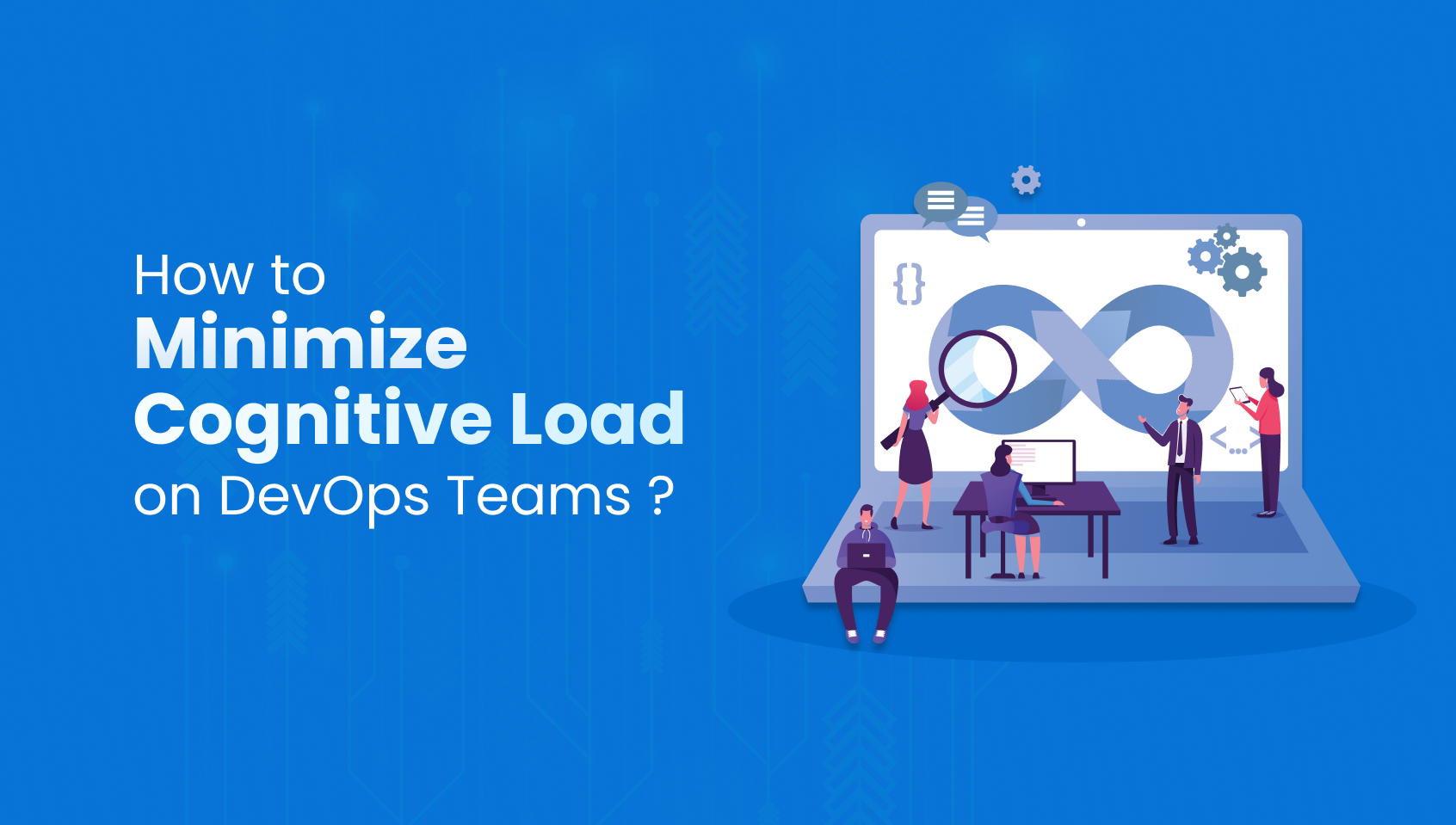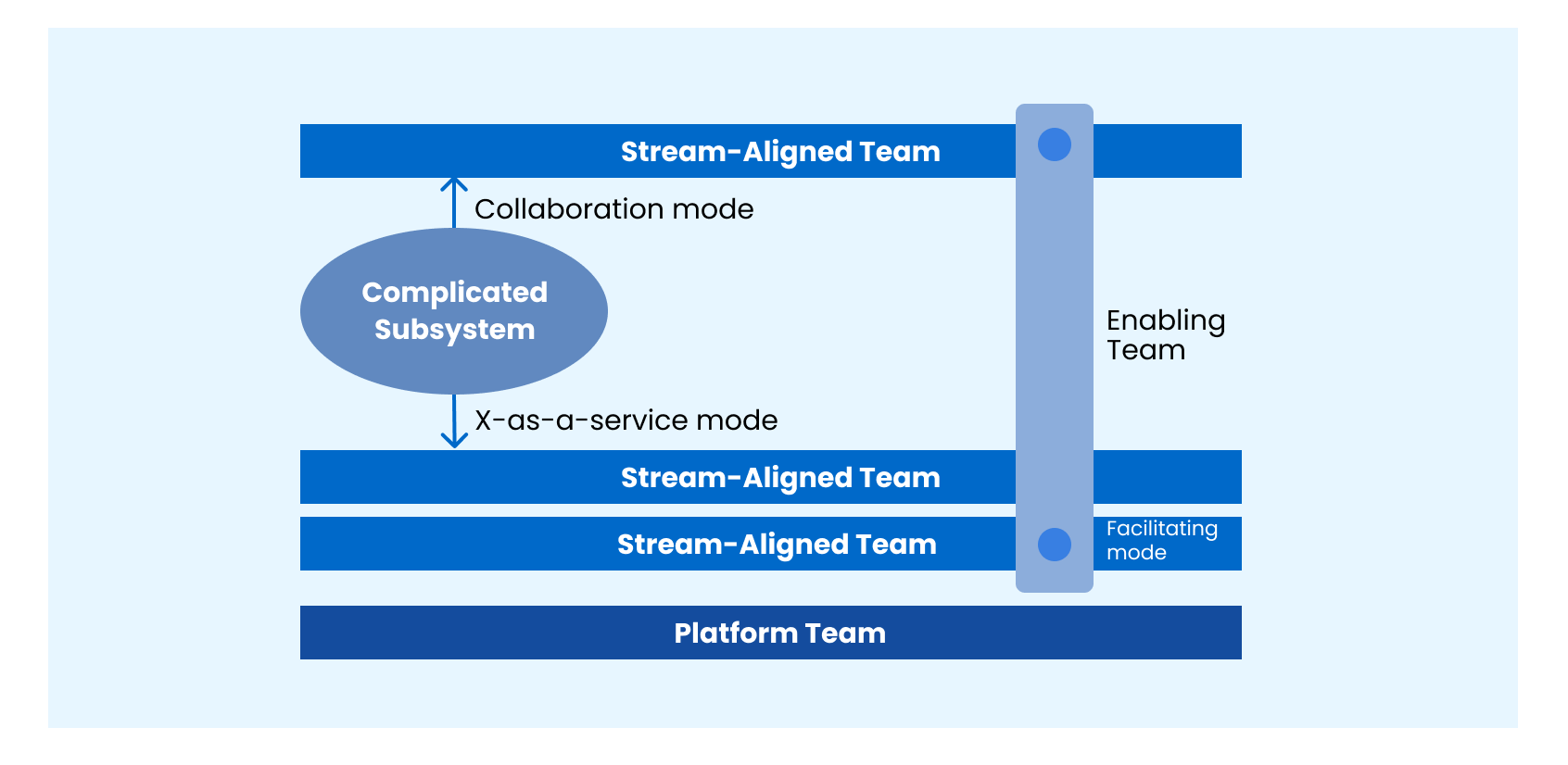
From managing multiple tools and technologies to dealing with constant change and increasing demand for quicker delivery, DevOps professionals often find themselves overwhelmed with cognitive load. However, by adopting the principles of Team Topologies, teams can streamline their workflows, reduce cognitive load, and enhance overall performance.
This piece of content explores the challenges faced by DevOps teams and strategies to reduce cognitive load using the principles of Team Topologies.
Challenges faced by DevOps teams
DevOps teams serve as the backbone of organizations, orchestrating the seamless delivery of products and services. However, amidst the ever-evolving landscape of technology and the increasing demands for speed and quality, DevOps teams face a multitude of challenges that hinder their effectiveness.
At the heart of these challenges lies the concept of cognitive load - the mental effort required to process information and perform tasks. DevOps teams grapple with the cognitive load daily, navigating complex systems, managing numerous tools and technologies, and responding to constant changes in requirements and environments. This cognitive overload not only strains individual team members' mental faculties but also impacts team collaboration, decision-making, and overall productivity.
Several factors contribute to the heightened cognitive load experienced by DevOps teams. At first, the sheer volume and complexity of the technologies involved in modern software development can be overwhelming. From containerization and orchestration tools to continuous integration and delivery pipelines, DevOps practitioners must juggle many tools and frameworks, each with its own set of intricacies and dependencies.
Moreover, the expectation to deliver software rapidly, in line with agile and DevOps principles, exacerbates cognitive load. Tight deadlines and frequent deployments necessitate quick decision-making and multitasking, leaving little room for contemplation or error. As a result, team members may find themselves constantly firefighting, struggling to keep up with the pace of development while maintaining quality standards.
Furthermore, the distributed nature of DevOps teams, often spanning multiple time zones and geographical locations, adds another layer of complexity. Communication barriers, cultural differences, and coordination challenges can all contribute to cognitive load, as team members strive to stay aligned and informed amidst the chaos of distributed collaboration.
Considering these challenges, it becomes imperative for CTOs and COOs to explore strategies and techniques to alleviate the cognitive load on DevOps teams. By understanding the root causes of cognitive overload and implementing targeted interventions, organizations can empower their teams to work more efficiently, collaboratively, and creatively, ultimately driving better outcomes for software delivery projects.
High cognitive load negatively impacts productivity in several ways:
- Decreased Focus: Cognitive overload can lead to decreased focus and attention, resulting in lower-quality work and increased error rates.
- Burnout: Continuous high cognitive load can contribute to burnout among team members, leading to decreased morale and motivation.
- Slower Problem Resolution: When team members are overwhelmed, problem resolution times can increase, leading to delays in project timelines and delivery.
Understanding Team Topologies
Team Topologies are structures within organizations that optimize collaboration and workflow efficiency among teams. They establish clear roles, responsibilities, and communication channels, enhancing teamwork and decision-making processes. Let’s have a brief intro on the types of teams:
Stream-aligned Teams
are dedicated to delivering specific streams of work or products. They focus on achieving alignment with business goals and customer needs, ensuring timely delivery and quality outcomes.
Enabling Teams
supports stream-aligned teams by providing necessary tools, platforms, or expertise. They facilitate the smooth functioning of other teams by helping and resources as required.
Complicated subsystem Teams
specialize in handling complex subsystems or domains that require deep expertise. They focus on managing intricate components of the organization's infrastructure or products, ensuring reliability and performance.
Platform Teams
are responsible for developing and maintaining shared platforms or infrastructure across the organization. They create standardized environments and tools that enable other teams to build and deploy their products efficiently.

Exploring Team Interaction Modes: Let's Break it Down!
In addition to delineating functional team types, the following are three key effective interaction modes that are essential to enhance teamwork and productivity:
Collaboration
entails working collectively for a defined period, with the aim of discovering new insights, practices, or technologies. By fostering an environment conducive to exploration and experimentation, organizations can harness the collective intelligence of diverse teams, driving innovation and knowledge sharing.
X-as-a-Service
model facilitates seamless provision and consumption of resources or services within the organizational ecosystem. Whether it involves infrastructure, tools, or expertise, this mode of interaction promotes efficiency and scalability, enabling teams to focus on their core objectives without being encumbered by operational overhead.
Facilitation
embodies the spirit of mentorship and support, with one team guiding and assisting another in overcoming challenges or achieving objectives. By leveraging collective expertise and experience, organizations can foster a culture of continuous learning and improvement, propelling teams toward greater levels of success and resilience.
These interaction modes serve as pillars for building strong collaborative ecosystems within organizations, driving innovation, and achieving collective goals.
Team Topologies to the Rescue:
Team Topologies offers a structured approach to organizing teams, emphasizing the need to align team structures with the nature of the problems they are solving. This alignment helps minimize intrinsic cognitive load by ensuring teams focus on well-defined and cohesive problem domains. Here's how Team Topologies can help:
Clear Roles and Responsibilities
One of the fundamental principles of team topologies is the establishment of clear roles and responsibilities within teams. By delineating who is responsible for what, teams can reduce ambiguity and avoid duplication of efforts, thus freeing up mental bandwidth for more critical tasks.
Streamlined Communication Channels
Effective communication is the lifeblood of any successful DevOps team. Team topologies emphasize the importance of establishing streamlined communication channels, whether through regular stand-up meetings, collaboration tools, or dedicated communication platforms. By ensuring that information flows freely and efficiently, teams can minimize cognitive load and foster a more cohesive working environment.
Encouraging Continuous Learning
In a fast-paced DevOps environment, continuous learning is key to staying ahead of the curve. Team topologies encourage a culture of continuous improvement and knowledge sharing, where team members are encouraged to learn from both successes and failures. By investing in ongoing training and development initiatives, organizations can equip their teams with the skills and knowledge needed to tackle complex challenges with confidence, thus reducing cognitive load in the long run.
Automation and Tooling
Automation plays a pivotal role in reducing cognitive load by automating repetitive tasks and streamlining workflows. Team topologies advocate for the use of suitable automation tools and technologies to automate manual processes wherever possible, allowing team members to focus their attention on more value-added activities.
Adaptability and Flexibility
Finally, team topologies emphasize the importance of adaptability and flexibility in responding to changing business needs and market dynamics. By adopting agile principles and embracing iterative approaches to work, teams can adapt more seamlessly to evolving requirements, thus mitigating the cognitive burden associated with rigid and inflexible processes.
Conclusion:
Cognitive load management emerges as a cornerstone of effective team dynamics and organizational success. By comprehensively addressing intrinsic, extraneous, and germane dimensions of cognitive load, you can foster a culture of productivity, innovation, and collaboration. However, by embracing effective team topologies, organizations can mitigate cognitive load and create a more conducive work environment for their teams. Whether through clear roles and responsibilities, streamlined communication channels, or a culture of continuous learning, team topologies offer a roadmap for success in navigating the complexities of modern-day DevOps.

